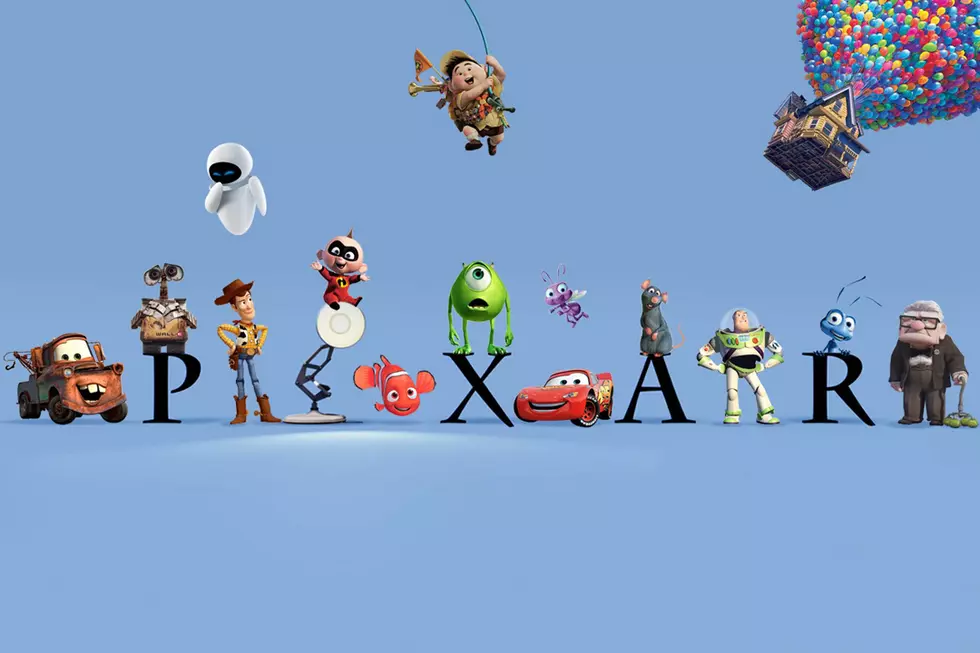
Nas Kicks Off Tribeca Film Festival With the New Documentary ‘Time is Illmatic’
There’s a scene in ‘Life is Illmatic’ – the new documentary chronicling the creation on Nas’ seminal hip hop album, ‘Illmatic,’ which premiered Wednesday night at the Tribeca Film Festival – in which Nas’ brother, Jabari, lists the fates of everyone in a group photo taken the day of Nas’ ‘Illmatic’ album cover shoot. The photo, 20 years old now, is of people from the Queensbridge Houses, the housing project that sits nestled under the Queensboro Bridge, right along the East River in New York City. The results aren’t pretty.
As Jabari goes down the line, almost everyone in the picture – mostly kids at the time – are either now dead or in prison. As Nas points out, without the music, that would have been them, too.
After the film, Nas performed the entirety of the ‘Illmatic’ album, and at one point invited Jabari and two of Jabari’s children onstage as the Beacon Theatre crowd showered them with applause. It was a dramatic contrast to that photo.
Admittedly, going into this documentary, my knowledge of Nas’ first album was not much more than an awareness of its importance. To be honest, one of the reasons that I was anticipating ‘Life is Illmatic,’ was because I couldn’t help but think “I should really know more about this.” And, now, I certainly do – but I wish the film would have spent a little more time on documenting the album’s influence. It does a good job of explaining how it got made – and why it was so important for Nas that this album got made – but it doesn’t really illustrate why it’s so important for culture that it exists.
The film, directed by One9, chronicles a young Nas who, despite growing up in the projects, admits that his family didn’t have it that bad. They had a color television, they had a VCR, and they always had food on the table. Nas’ father, Olu, was a musician and was a huge influence on his life, while his mother provided the stability. Things started to change with Nas’ father told him he could drop out of school during the eighth grade. (Nas, during the post-film concert, even now jokes that this is kind of messed up, even though his father had the best on intentions.) It was at this point that Nas started to concentrate on his music.
Look, the above paragraph is a fairly standard summary to a fairly standard first 30 minutes of a documentary. It’s after this that the film really kicks in and becomes a who’s who of the 1980s hip-hop scene. Face after face from the era appear on the screen, met with uproarious applause each time by the Beacon Theatre crowd.
Though, that’s always the problem with an event like this. It’s almost impossible to disassociate yourself from your surroundings, and for all the film’s faults, this crowd was really into it – and it’s easy to feed off of that energy and forget about those pesky faults. The problem is, that crowd isn’t going to show up and applaud when you’re watching this film at home on VOD. Nas isn’t going to show up after and give you a private performance.
The film does a nice job of chronicling how Nas was discovered and documenting the recording process of ‘Illmatic’ once Nas signed on with Columbia Records (Nas admits he wanted to sign with Columbia because of Michael Jackson). But, again, the film hints, briefly, near the beginning, of modern day contemporaries like Pharrell singing the praises of ‘Illmatic,’ but I wanted more of that. I know ‘Illmatic’ helped change the landscape of hip hop music, but I wish a documentary based on its 20 year anniversary would have done a better job showing its influence.
Then again, it’s hard not to think about that picture: where Nas came from, the fates of all the young men standing around him, and the extraordinary odds he had to beat to be standing on that stage on Wednesday night. Watching him and his brother and his two nephews dance around the stage – seeing the joy on their faces – it’s hard not to imagine that was going through their minds a bit on a night like this. Their night. And it’s telling that, as his nephews left the stage, here’s Nas – a junior high school dropout and now a very wealthy man – yelling back at them one last time, “Stay in school.”
Mike Ryan is the senior editor of ScreenCrush. You can contact him directly on Twitter.
More From ScreenCrush









